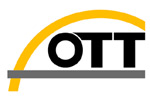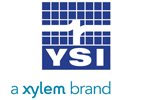OTT CBS Compact Bubbler Sensor
Features
- Meets and exceeds USGS guidelines for water level accuracy, and will not drift over time
- 5 year expected life based on 1 minute intervals - no pump maintenance or lubrication required
- Easy integration with NexSens data logging & telemetry products
- Free ground shipping
- Expedited repair and warranty service
- Lifetime technical support
- More
Overview
The OTT CBS Compact Bubbler Sensor with EPS 50 Bubble Chamber accurately measures surface water level for new or existing stream gauges. The instrument's compact design and low power consumption make it a great solution for solar charged applications. The sensor will not drift over time and does not require desiccant, eliminating the need for periodic site visits. At a 1 minute sampling interval, the CBS has a 5-year expected life before routine maintenance or lubrication is required.
Intelligent Pumping
The sensor features an intelligent pumping strategy that compares the previous measurement to the actual pressure at the current measurement. This optimizes pumping time and provides extremely high accuracy that meets and exceeds USGS guidelines of +/-0.01 ft accuracy. All calibration data is stored on the pressure cell, so field replacement can easily be accomplished as needed.
IoT-Compatible
The CBS features a plug-and-play interface to NexSens iSIC data loggers via SDI-12 digital output. Data collection options include direct-connect, landline phone, cellular, radio, Ethernet, WI-FI, and satellite telemetry. Each iSIC data logger simultaneously supports 8 analog inputs & 4 digital inputs for multi-sensor data logging capability. NexSens iChart Software is a Windows-based program for interfacing both locally (direct-connect) and remotely (through telemetry) to an iSIC data logger or network of data loggers.
- Measuring Range: 0-50 ft (0-15 m)
- Accuracy (Standard): +/-0.02 ft from 0 to 50 ft
- Accuracy (High Accuracy): +/-0.01 ft from 0 to 15 ft
- Resolution: 0.003 ft / 0.014 psi
- Units: ft, psi, m, bar
- Measuring Interval: 1 min to 24 hr
- Maximum Rate of Level Change: 3 ft/min
- Output: SDI-12 or 4-20mA
- Power Supply: 10-30 VDC
- Power Consumption: 15 min interval - 25 mAh/day; 1 min interval - 320 mAh/day
- Compatible Tubing: 1/8", 2 mm or 4 mm ID
- Temperature Range: -4 to 140 F (-20 to 60 C)
- Dimensions: 6.5" x 8.1" x 4.6" (L x W x H)
- Weight: 3.3 lbs.
In The News
Canadian and UK researchers find billion-year-old water
Scientists have determined that water trapped in crystalline rocks beneath a Canadian mine is more than a billion years old, according to a press release from the United Kingdom’s National Environment Research Council. The old water was found coming from boreholes in a mine 2.4 kilometers beneath Ontario by scientists from the University of Manchester, the University of Toronto and McMaster University. After testing the researchers estimated it to be 1.5 billion years old. Analysis of the water showed that it contained hydrogen and methane. It also contained the noble gases helium, neon, argon and xenon. According to the release, the hydrogen content of the water was similar to hydrogen in deep volcanic vents in the ocean where microorganisms thrive.
Read MoreRiver Flow Measurements: Real-Time Solutions
Water level sensors are commonly used in river and stream monitoring applications because they are cost-effective ways to estimate real-time river flow measurements . The river or stream’s level can be used with a water flow rating curve to estimate flow continuously. Level is measurable either with a pressure, bubbler, or non-contact radar sensor. What is river flow? Volumetric flow rate measures the speed at which a volume of water in a river is travelling downstream (often reported in cubic feet per second). When flow rate increases, water has a greater ability to erode its channel and banks. More and heavier sediment can be carried by the river, which increases the river’s turbidity.
Read MoreApplied Research and Innovative Solutions: Creating CHNGES at Western Kentucky University
Long-standing environmental monitoring programs have the power to support a large number of research initiatives and policy changes—however, actually starting these networks can prove challenging. Not only is starting the program difficult, but keeping things operational for decades to come has also been challenging for environmental professionals hoping to make an impact with applied research. Jason Polk, Professor of Environmental Geoscience and Director of the Center for Human GeoEnvironmental Studies (CHNGES) at Western Kentucky University, is all too familiar with this process.
Read More



















